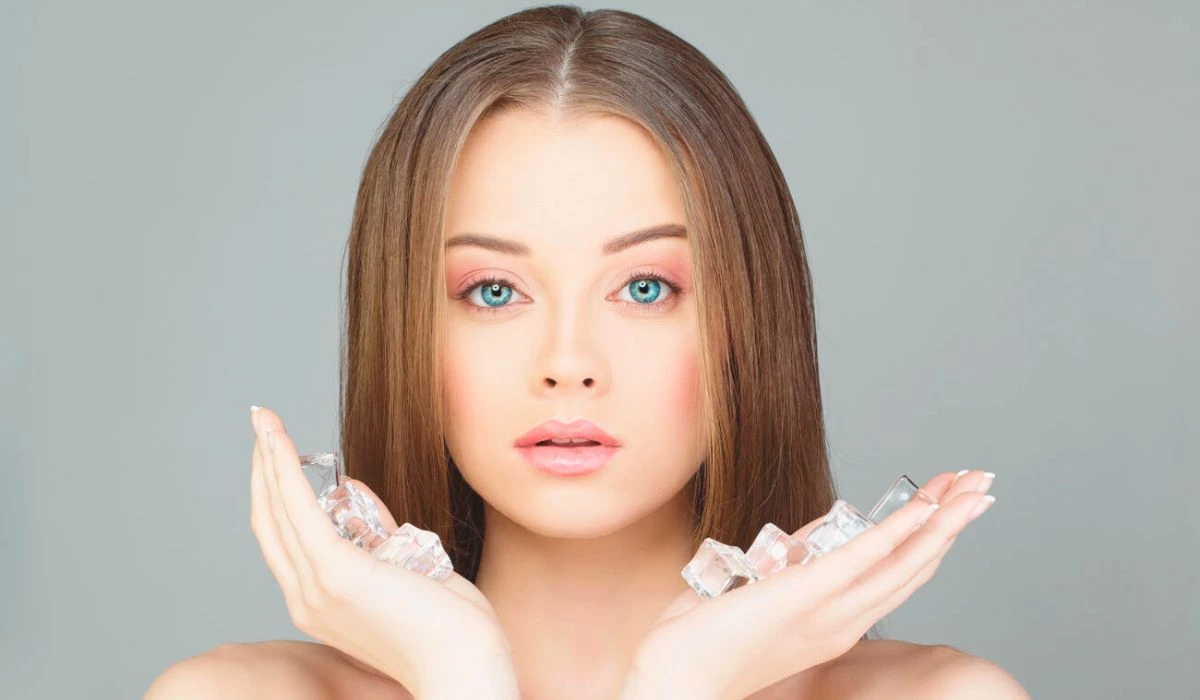Rubbing ice cubes on the face isn’t just a trend – it offers several advantages! This beauty hack has been around for centuries and is still popular today. It can improve complexion, reduce inflammation and give a refreshing feeling.
The cold temperature shrinks blood vessels, reducing redness and swelling. It also reduces pore size, making skin appear smoother. It can even provide relief for puffy eyes and headaches!
Before putting on makeup, apply ice cubes to the face. The cold tightens pores and mattifies oily areas. This makes the foundation last longer without smudging or melting.
Benefits Of Rubbing Ice Cubes On The Face

Rubbing ice cubes on your face can give you many benefits for your skin’s health and appearance. Let’s explore the key advantages:
- Unclogging pores: Shrinking them with ice cubes reduces excess sebum, preventing acne.
- Soothing inflammation: Cold temperatures soothe skin with conditions like sunburns, rashes, and eczema.
- Improving blood circulation: Massaging with ice promotes a natural glow and reduces puffiness or redness.
- Tightening skin: Regular use tightens muscles and improves elasticity for a more youthful, toned look.
- Aiding product absorption: Applying ice cubes before skincare products helps them absorb better.
Plus, ice cubes stimulate collagen production. Collagen strengthens skin structure and reduces signs of aging.
How To Use Ice Cubes On Face
– First, wash your face with a gentle cleanser. This prepares your skin to benefit from the ice.
– Get an ice cube from the freezer and wrap it in a cloth or put it in a plastic bag. This protects your skin from damage.
– Gently massage the ice cube on your face in circular motions. Start at the center and move outwards. The cold will help reduce redness and puffiness, and give a refreshing feeling.
– Pay extra attention to areas with acne or inflammation. The cold will help soothe irritation.
– After massaging with the ice cube, pat your skin dry with a soft towel. Then use your usual skincare products.
– Remember to not overuse the ice cubes. Too much exposure to cold temperatures can damage the skin.
Precautions And Tips For Using Ice Cubes on Face
Using ice cubes on the face has various benefits for the skin. But, certain precautions must be taken for safe and effective use. Here are some tips to remember:
- Always wrap the ice cubes in a cloth or towel before applying them to the face. Direct contact can cause frostbite or skin damage.
- Massage your face with the wrapped ice cubes in circular motions. This boosts blood flow and reduces puffiness or inflammation.
- Do not put ice cubes on open wounds or broken skin. This could worsen the condition or lead to infection.
- Use ice cubes sparingly and for short time periods, especially if you have sensitive skin. Too much may cause redness, dryness, or irritation.
- If you feel discomfort or unusual reactions after using ice cubes, stop immediately and see a dermatologist.
- For more benefits, infuse water with natural ingredients like green tea, cucumber juice, or rose water before freezing. This nourishes and hydrates the skin while reducing inflammation.
Conclusion
Rubbing ice cubes on the face can give you many benefits. It helps reduce puffiness, shrink pores, increase blood flow, and act as a natural primer to make makeup last longer. Plus, it gives you a relaxing spa-like experience. To get the most out of this skincare technique, here are some ideas:
? Make different ice cubes with herbal infusions or fresh juices. Green tea-infused cubes soothe inflammation, and cucumber juice-infused ones hydrate and moisturize.
? Wrap the cube in a soft cloth before applying it.
? Massage with it once or twice a week.
By doing this, you can customize your experience based on skin concerns and unlock the full potential of using the ice cube technique for healthier and more rejuvenated skin. Go ahead and try it!

